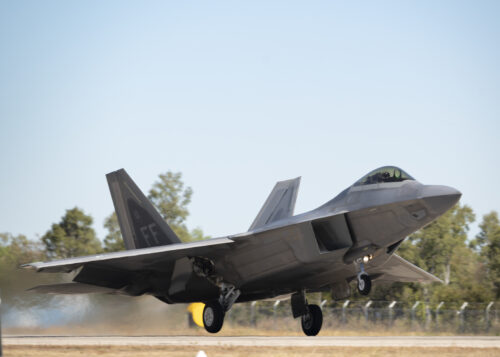The United States Air Force (USAF) F-22 Raptor made its debut at Exercise Pitch Black, Australia’s largest air warfare exercise. Deployed from Kadena Air Base, Japan, a contingent of six F-22s integrated seamlessly with a diverse array of allied aircraft, demonstrating the platform’s interoperability and combat capabilities.

Lt. Col. Ryan Nickell, commander of the 27th Expeditionary Fighter Squadron, highlighted the exercise as an invaluable opportunity to operate alongside partners from both NATO and the Asia-Pacific region. The expansive Australian airspace provided an ideal environment for the Raptors to showcase their full performance envelope.
While the primary role of the F-22s during the exercise was escort, their flexibility allowed them to adapt to various mission profiles, including offensive counter-air (OCA) and defensive counter-air (DCA) operations. The squadron successfully operated alongside a diverse array of platforms, including the F-35 Lightning II, Typhoons from European Air Forces, and various fourth-generation fighters, underscoring the F-22’s ability to integrate into complex air battle scenarios.
A key takeaway from the exercise was the seamless integration of the F-22 with allied command and control structures. Despite operating with aircraft from different nations equipped with varying communication systems, the USAF was able to effectively share data using Link 16 and coordinate operations.
The deployment to Australia provided valuable training for F-22 aircrews, allowing them to operate in a challenging and demanding environment. The opportunity to interact with pilots from other countries fostered knowledge sharing and strengthened international cooperation.
Overall, the F-22’s performance at Pitch Black showcased its capabilities as a potent air superiority fighter and highlighted the importance of interoperability in modern air warfare.